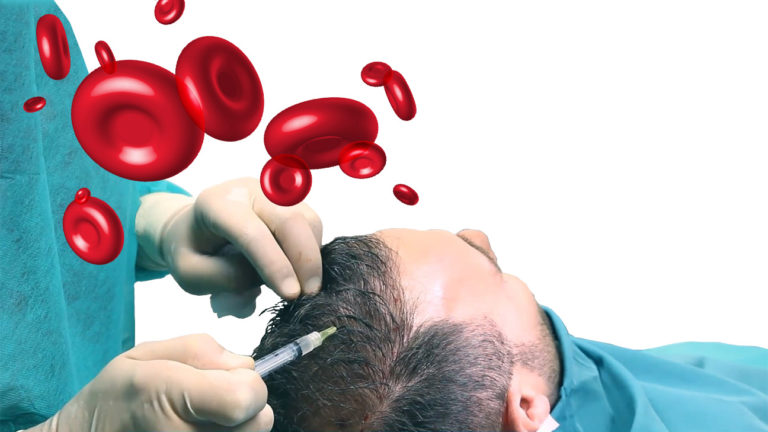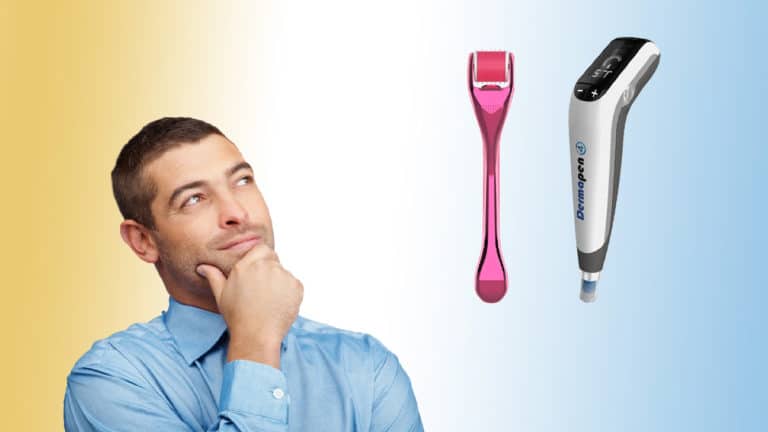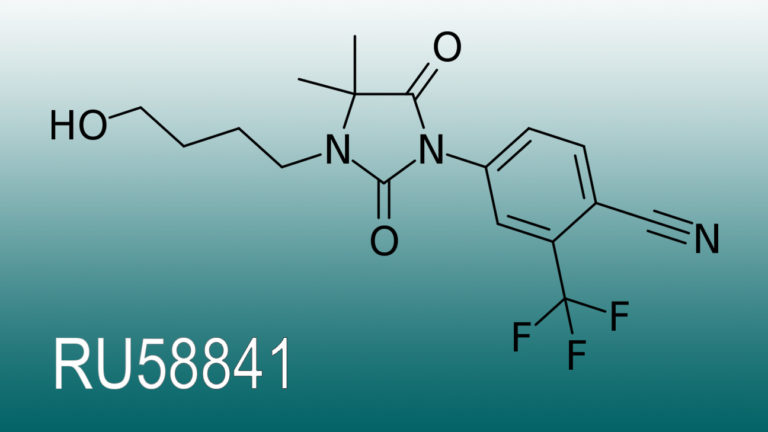Shampoos for Hair Loss: Do They Really Help?

If you buy something through a link on this page, we may earn a small commission. It does not affect the product price. Read our advertising policy.
When patients come with complaints of hair loss, I always ask them: “What have you done till now to treat your hair loss?”. The answer in most cases is: “hair loss shampoo from a supermarket or pharmacy.”
Shampoos are by far, the most sold products over the counter against hair loss. However, there is a considerable mismatch between the scientific literature available and the shampoos marketed for hair loss.
So, do these shampoos really help against hair loss, or is it just a marketing ploy? Read on to find out more:
Why is choosing the right shampoo important?
The condition of the scalp directly affects hair growth. Hair that grows from an unhealthy scalp is rigid, rough, and particularly prone to breakage. While a shampoo’s primary function is to clean the scalp, it also plays a vital role in maintaining scalp health.
Like any other part of the body, the scalp also undergoes aging. Oxidative stress is one aspect of the aging process. It can also occur due to diseases affecting the scalp. Oxidative stress releases free oxygen radicals, which can cause DNA damage and hence aging. Studies have demonstrated an association between hair loss and oxidative stress.
A shampoo that is too harsh can dry out the skin on the scalp and cause itching. If a shampoo is too weak, it will not clean the scalp effectively, leading to overgrowth of organisms and dandruff.
A popular misconception is to avoid shampoos that contain sulfates. Choosing a mild shampoo does not mean throwing away everything that contains sulfate as an ingredient. Many modern shampoos with sulfates are formulated in a way that the harshness of sulfates is canceled by other mild ingredients. Many shampoos with sulfates could be gentler than shampoos without sulfates.
When choosing a shampoo, the most important factor that I suggest keeping in mind is pH. Choosing a shampoo with a pH of around 5.5 helps maintain the scalp’s natural health.
Anti-dandruff shampoos for the treatment of hair loss
Dandruff is caused due to a group of fungi called Malassezia. These are normal residents of our scalp, so it is not considered an infection. The extreme form of dandruff is called seborrheic dermatitis. It is caused by the over-colonization of these fungi, which causes inflammation and excessive flaking of dead skin.
This active inflammation results in itching and scratching, dislodging the hair from hair follicles, and causing hair loss. Several studies have found that poor scalp health like dandruff is a cause of premature hair loss.
Malassezia can also cause hair loss by speeding up the scalp’s aging process via oxidative stress. As mentioned above, oxidative stress contributes to hair loss. Anti-dandruff shampoos that decrease the colonization of fungi on the scalp could help in reducing hair loss.
Such shampoos usually contain ketoconazole, selenium sulfide, zinc pyrithione, piroctone olamine, or ciclopirox olamine.
Ketoconazole
A study was done to compare 2% ketoconazole shampoo to unmedicated shampoo, with or without 2% minoxidil for androgenetic alopecia in males. It showed that the improvement of hair density and the increase in the proportion of hair in the growth phase were similar in both ketoconazole and minoxidil groups.
The surprising element here was the improvement shown by ketoconazole, even in the absence of dandruff. Apart from its action on Malassezia fungi, ketoconazole also inhibits DHT, which is directly responsible for androgenetic alopecia (male and female pattern hair loss).
Zinc pyrithione
The use of 1% zinc pyrithione (ZPTO shampoo – Head & Shoulders®) shampoo in a 6-month study on 200 patients showed that the shampoo’s hair growth potential was slightly less than half compared to 5% minoxidil after nine weeks of treatment. However, the results were sustained during the entire study period.
Piroctone olamine
In a study on 150 men with hair loss due to dandruff, the use of 1% piroctone olamine shampoo 2-3 times a week decreased hair shedding by around 16% after six months. Compared to ketoconazole and zinc pyrithione, the piroctone olamine group saw the most significant increase in the number of hairs in the growth phase (anagen).
In contrast to zinc pyrithione, piroctone olamine also showed an increase in hair thickness at the end of the treatment period.
There are no specific studies to show improvement of hair loss with ciclopirox olamine and selenium sulfide-based shampoos. Interestingly, there is a rare report of selenium sulfide shampoo causing diffuse hair loss.
Other popular shampoo ingredients against hair loss
Caffeine
Caffeine counteracts the effect of androgens on hair growth, increases the growth phase duration (anagen), and increases the hair follicle’s growth factors. It also relaxes the hair follicles in androgenetic alopecia. Female pattern hair loss appears to be more sensitive to caffeine than male pattern hair loss.
The use of caffeine shampoo against hair loss was first brought to the news by a German shampoo called Alpecin. The pharma industry has financially aided many studies conducted on this topic, therefore it has to be taken with a grain of salt.
A study with 30 male subjects with androgenetic alopecia showed a reduction in hair loss and increased hair strength after six months of caffeine shampoo use. Around 67% percent of subjects were satisfied with the results.
A phyto-caffeine shampoo was compared against a non-caffeine control shampoo in patients with female pattern alopecia. After six months, the hair pull test (a clinical test to demonstrate the severity of hair loss) was significantly better in those using caffeine shampoo compared to the ones using non-caffeine shampoo. It was also well tolerated.
A study shows that the combination of caffeine and minoxidil solution is more effective than minoxidil alone. So caffeine shampoo can be used as an adjunct to those already using minoxidil.
But does caffeine in a rinse-off, short-contact formula penetrate into the hair follicle to exert its action? The answer is yes. The easy penetration of caffeine across the skin barrier makes it an ideal compound for topical application. A small experiment showed that caffeine shampoo deposits active ingredients in the hair follicle after two minutes of contact duration. However, whether the concentration deposited is enough for it to work on hair growth is unclear.
Amino Acids
Amino acids are the building blocks of keratin that form the structural framework of hair. Oral amino acids have shown demonstrable effects in hair loss, but their use as shampoo ingredients remains controversial.
In Rogaine’s roundtable conference in 2009, it was discussed that the replacement of amino acids via shampoo could increase hair strength, thus reducing hair breakage and promoting an increase in the density of the hair. This is not supported by any evidence, however.
Licorice
Licorice is another overhyped ingredient in hair loss shampoos. There is no evidence to support any role of licorice in shampoo. In fact, a small study showed that using licorice shampoo brought no change in hair loss in 87% of the subjects.
Biotin
Biotin is perhaps the most overhyped and over-prescribed product in hair loss treatment. Its use, even as an oral supplement in hair loss, is questionable. In healthy individuals with no biotin deficiency, biotin supplementation is proven to provide no added benefit, except perhaps a placebo effect.
One may argue the presence of some, albeit not strong, studies in favor of oral biotin supplementation. However, there is zero evidence that biotin shampoo helps in hair loss.
The addition of biotin in shampoo just cashes in on the hype of biotin and serves no function other than adding to the shampoo’s cost.
Other vitamins and antioxidants
Since aging does play a role in hair loss, antioxidants could theoretically work against hair loss. However, due to water dilution and limited contact time, anti-aging ingredients fail to show any effect in shampoos. Most antioxidants in shampoo, such as vitamins C and E, are to prevent the oxidation of shampoo itself and have minimal to no effect on the scalp.
Vitamin B5 (panthenol) in shampoo works to moisturize the hair shaft to reduce breakage, but a benefit in hair loss is not known.
Androgenetic alopecia is associated with low plasma levels of zinc, but it is better given as an oral supplement instead of being added to a shampoo.
Ginseng
Ginseng has shown some promise in promoting hair growth and is used in traditional Asian medicine to treat hair loss. However, studies supporting Ginseng in hair growth are largely laboratory-based, and no solid evidence exists for the hair growth-promoting effect of Ginseng in any topical form.
Shampoos in telogen effluvium
According to an expert consensus, shampoos do not play any role in the treatment of telogen effluvium.
The use of mild shampoo is recommended to avoid disturbing the skin condition on the scalp and worsening hair loss. If there is dandruff alongside, mild anti-dandruff shampoos can be used.
Shampoos to reduce hair breakage
Hair breakage is technically not hair loss. However excessive hair breakage could reduce the density of hair and create an illusion of hair loss. Hair breakage is mostly due to dryness, open cuticles, and weathering due to chemical/ heat treatments.
Depending on the reason for hair breakage, a shampoo containing silicon (like dimethicone or amodimethicone) or moisturizing ingredients like panthenol could reduce hair breakage. This effect is most noticeable when paired with a good conditioner.
Shampooing habits for hair loss reduction
Conclusion
Apart from anti-dandruff and perhaps caffeine-containing shampoos, no other products in this category play a role in reducing hair loss or promoting hair growth.
However, choosing a good shampoo remains essential to maintain scalp health because scalp health is directly related to hair growth. Choose a mild shampoo, and don’t splurge on the gimmicky options that promise you hair growth.





